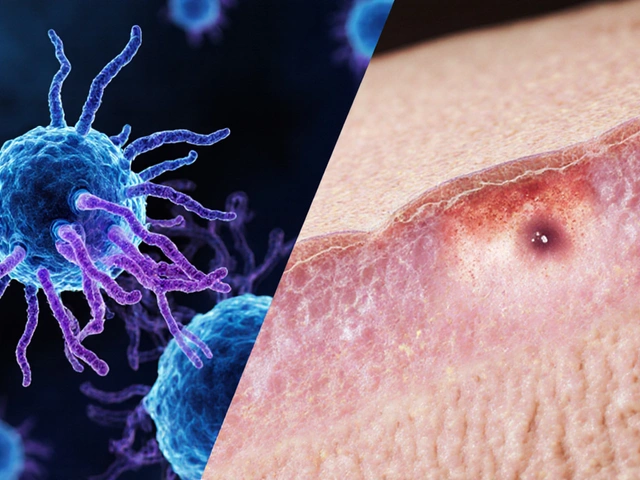Lowering cholesterol: practical steps you can start today
High LDL (the 'bad' cholesterol) quietly raises your risk of heart attack and stroke. The good news: you can lower it with things you actually do every day — food choices, movement, and the right medicines when needed. Here are clear, no-nonsense steps that get results.
Smart daily habits that lower LDL
Cut saturated fats: swap butter, fatty cuts of meat, and full-fat dairy for lean meat, poultry, and low-fat dairy. Avoid trans fats found in many fried and packaged foods — they raise LDL a lot.
Add soluble fiber: oats, beans, lentils, apples, and barley feed your gut and trap cholesterol so your body excretes more of it. Adding 5–10 g of soluble fiber daily can lower LDL a noticeable amount over weeks.
Choose healthy fats: use olive oil, avocado, nuts, and fatty fish like salmon or mackerel twice a week. These choices tend to lower LDL and raise protective HDL.
Move more: aim for about 30 minutes of moderate activity most days — brisk walking, cycling, or swimming. Losing even 5% of body weight helps lower LDL and triglycerides.
Quit smoking and limit alcohol: smoking worsens blood vessel health and alcohol raises triglycerides when overdone. Sleep well and manage stress; both affect eating and activity habits.
Medications that lower cholesterol
When lifestyle changes aren’t enough, medicines work well. Statins (atorvastatin, simvastatin, others) are the first choice. They lower LDL significantly and cut heart attack risk — large trials show roughly a 25–40% drop in major events for people at higher risk.
Common side effects include muscle aches and occasional liver enzyme changes. If you get side effects, doctors often try a different statin, a lower dose, or another drug.
Non-statin options: ezetimibe (adds ~15–25% LDL drop when combined with a statin), PCSK9 inhibitors (very strong LDL reduction for people who need more), and newer pills like bempedoic acid. Supplements like red yeast rice contain statin-like compounds — treat them cautiously and talk to your doctor.
Watch interactions: grapefruit juice can boost levels of some statins and increase side effects. Always tell your clinician about other meds and supplements.
Check your numbers: get a fasting lipid panel and an ASCVD risk estimate. Your doctor will suggest an LDL target based on age, diabetes, blood pressure, and heart disease history. Recheck labs typically 4–12 weeks after starting or changing treatment, then every 3–12 months once stable.
Want to buy meds online? Always get a prescription, use licensed pharmacies with clear contact info, verify reviews, and avoid sites that promise meds without a prescription. Read our guides on buying atorvastatin and choosing safe online pharmacies for step-by-step tips.
Small changes add up. Start with one or two habits — swap breakfast for oats, add a 20-minute walk, or book a discussion with your doctor about statins. Track your labs and adapt the plan until your LDL sits where it should.

Zocor: Uses, Side Effects, and Things to Know About Simvastatin
Zocor (simvastatin) is a common medication for lowering cholesterol, often prescribed to reduce the risk of heart attacks and strokes. This article explains how Zocor works, its benefits and risks, real-life experiences, and practical tips for anyone starting the medication. It’s packed with facts and easy advice to help you make sense of your options. If you’ve ever wondered what goes on behind the scenes with this widely used statin, you’ll find some answers and things to discuss with your doctor.
Health and MedicineLatest Posts
Tags
- online pharmacy
- medication
- dietary supplement
- side effects
- online pharmacy UK
- medication safety
- mental health
- impact
- online pharmacies
- dosage
- skin health
- health
- pain relief
- dietary supplements
- massage therapy
- medication side effects
- eye inflammation
- health benefits
- mental health treatment
- thyroid medication




